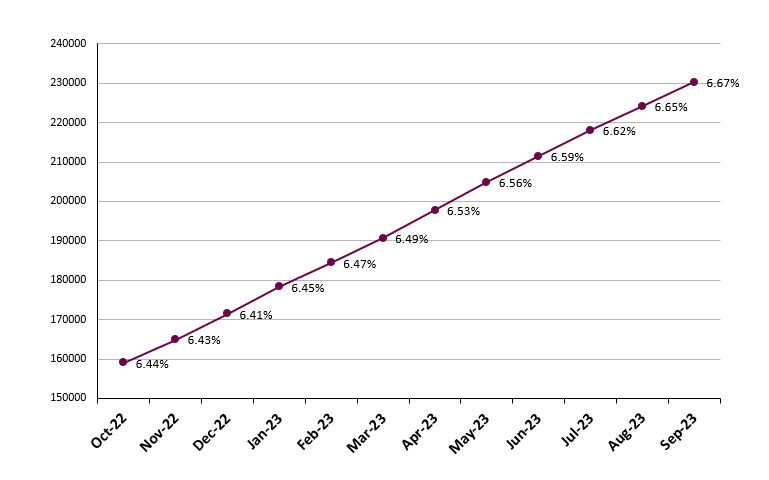NHS 111 Discovery frailty flagging: Difference between revisions
No edit summary |
No edit summary |
||
| Line 1: | Line 1: | ||
{{CaseStudy | {{CaseStudy | ||
|[[File: | |[[File:Frailty_graph_Sept2023.png|right]]The NHS 111 Discovery frailty flagging project utilises Discovery data to flag key information to NHS 111 call handlers to improve the patient pathway and experience, and reduce the unnecessary use of emergency services and admission to A&E. | ||
Since the project went live in November 2018, the Discovery Data Service has: | Since the project went live in November 2018, the Discovery Data Service has: | ||
* '''matched 3, | * '''matched 3,452,021 patients''' | ||
* '''flagged | * '''flagged 230,288 potentially frail patients''' | ||
* '''processed | * '''processed 18,322,321 API calls''' | ||
The graph shows the number of patients that have been flagged as potentially frail and have therefore been fast tracked to speak directly to a clinician who can provide personalised care; it shows the cumulative total (from the start of the project) and the percentage of potentially frail patients compared to the total number of matched patients (over the last 12 months). | The graph shows the number of patients that have been flagged as potentially frail and have therefore been fast tracked to speak directly to a clinician who can provide personalised care; it shows the cumulative total (from the start of the project) and the percentage of potentially frail patients compared to the total number of matched patients (over the last 12 months). | ||
'''Last update: | '''Last update: 16 October 2023'''|All patients within North East London ICB; Barking and Dagenham, City and Hackney, Havering, Redbridge, Tower Hamlets, Waltham Forest, and Newham.|Frail patients|See the [[frailty algorithm]] page for more details.|Patient identifiable}} | ||
Revision as of 10:00, 16 October 2023
Project Summary
The NHS 111 Discovery frailty flagging project utilises Discovery data to flag key information to NHS 111 call handlers to improve the patient pathway and experience, and reduce the unnecessary use of emergency services and admission to A&E.
Since the project went live in November 2018, the Discovery Data Service has:
- matched 3,452,021 patients
- flagged 230,288 potentially frail patients
- processed 18,322,321 API calls
The graph shows the number of patients that have been flagged as potentially frail and have therefore been fast tracked to speak directly to a clinician who can provide personalised care; it shows the cumulative total (from the start of the project) and the percentage of potentially frail patients compared to the total number of matched patients (over the last 12 months).
Last update: 16 October 2023
Project population
All patients within North East London ICB; Barking and Dagenham, City and Hackney, Havering, Redbridge, Tower Hamlets, Waltham Forest, and Newham.
Project cohort
Frail patients
Project criteria
See the frailty algorithm page for more details.
Data state
Patient identifiable
Back to Case studies
